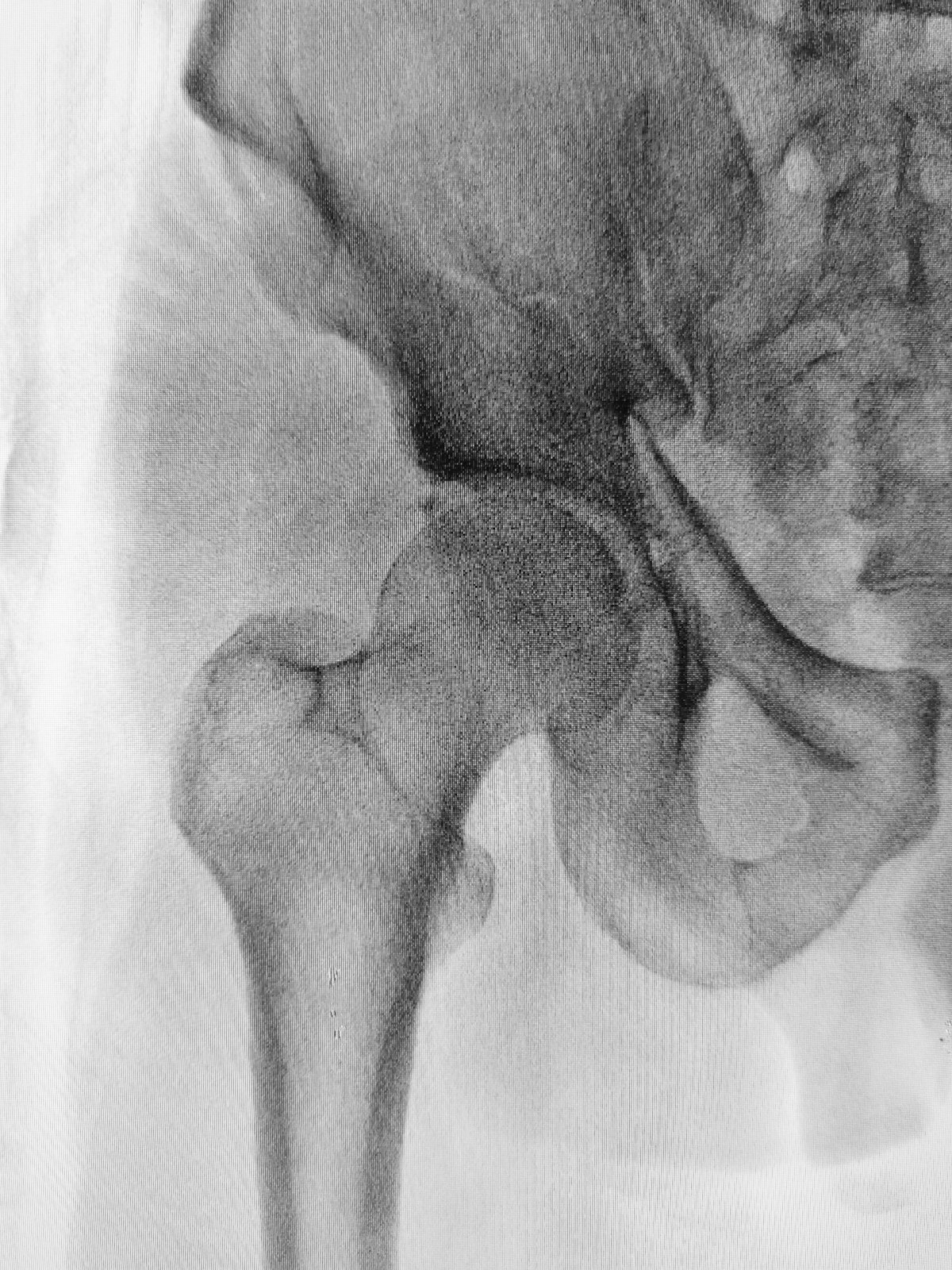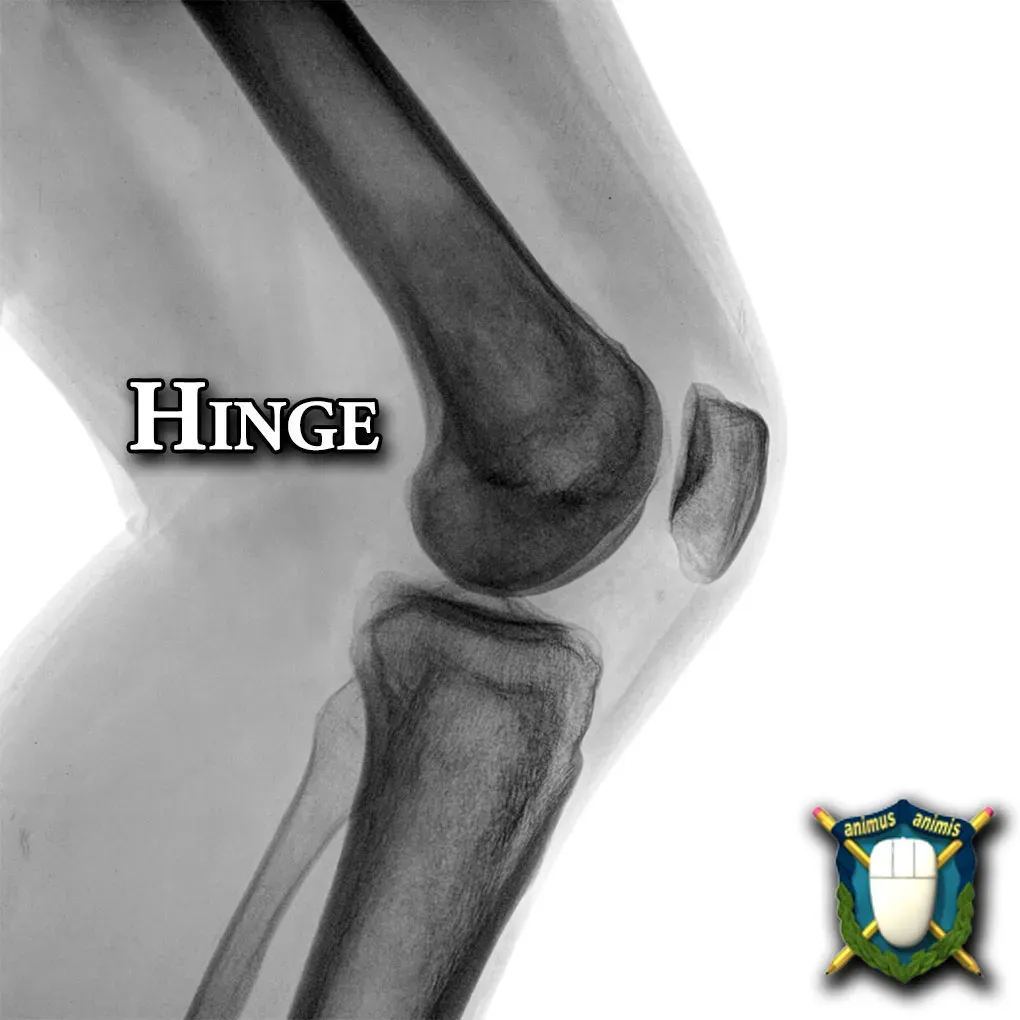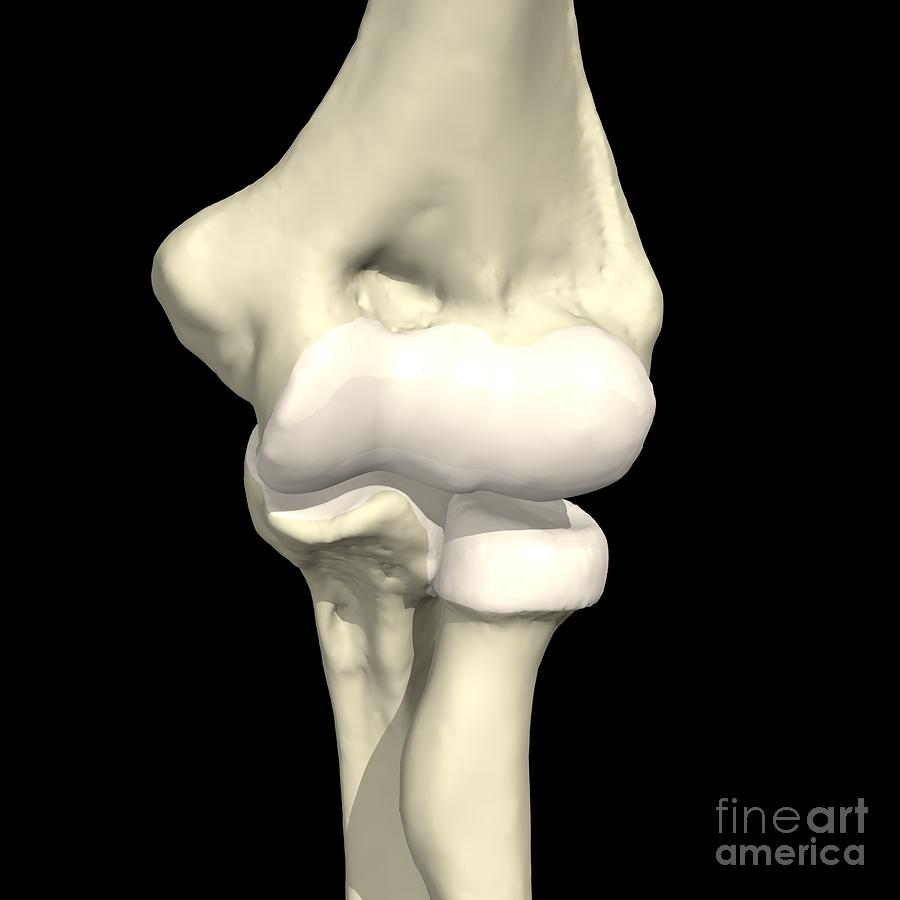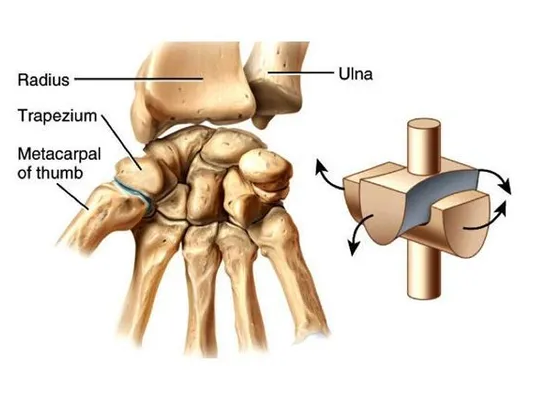Joints

There are six types of joints in the human body. These are: hinge joints, ball and socket joints, pivot joints, ellipsoid, saddle joints, and gliding joints.
Hinge Joints
Hinge joints are found in your knees, elbows and middle and end parts of your fingers. They can only move on one plane, or only back and forth.

Ball and Socket Joints
Ball and socket joints are joints that can move in two planes, or rotate in place. These joints are in your hips and shoulders.
The Pivot Joint
The pivot joint can rotate around a fixed point. An example of a pivot joint is your neck.

Ellipsoid Joints
These joints are found where your fingers connect to your hand. They can move in two directions without rotating. They can also move up and down, left and right without rotating.
Saddle Joints
Saddle joints are where the thumb connects to the hand. This joint is named like this because it looks like a horse's saddle. The thumb moves in two directions, but because of its shape, it is more flexible than the other finger joints.

Gliding Joint
Gliding joints are bones that glide over each other. They are in your hands.

Bones are held together by ligaments so that they could stick together and also move around. They also have cartilage on them, which is coated with synoval fluid so that it can move around without hurting.




